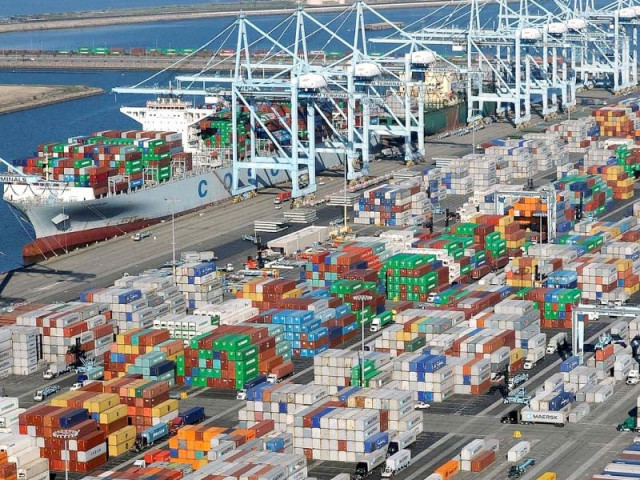Import management cuts deficit
Low availability of external financing is govt’s weakest point in Pak-IMF talks

The trade deficit contracted by 35% to $7.4 billion in the first four months of this fiscal year due to import management by the authorities – the only viable tool available to Pakistan amid a significant shortfall against projected external financing requirements.
The Pakistan Bureau of Statistics (PBS), the national data collecting agency, reported on Monday that the gap between imports and exports shrank to $7.4 billion, a 35% reduction in the July-October period of the current fiscal year. This figure was $4 billion less than the comparative period of the last fiscal year.
This reduction has alleviated the pressure on foreign exchange reserves, which had fallen below $7.5 billion as of last month, despite the existence of an International Monetary Fund (IMF) programme.
Low availability of external financing is the government's weakest point in the Pak-IMF talks for the $710 million loan tranche. These talks are set to begin on Thursday. The interim finance minister held an internal review meeting on Wednesday to assess performance against IMF conditions.
Given the shortage of available financing, the government has no option but to continue managing international trade, even though the import situation improved somewhat in October, just before the IMF talks.
In the first four months, Pakistan imported goods worth $17 billion, a decrease of $3.9 billion, or nearly one-fifth, compared to the same period last year. These imports represent only 29% of the annual projection of $58.7 billion.
Every dollar saved through reduced imports is effectively reducing pressure on the reserves, which remain at a critical level, equivalent to only 1.5 months of import cover. To access the World Bank’s commercial financing, the country needs a minimum of two and a half months’ worth of import cover.
However, the lack of sufficient raw materials is affecting industrial output, as Pakistan heavily relies on imported raw materials for manufacturing goods. The World Bank has noted that importers are still facing challenges in importing non-essential category goods.
The PBS reported a marginal increase in exports during the July-October period, totalling just $9.6 billion. Exports saw a $63 million increase over four months, primarily due to growth in October. These four months’ exports represent 32% of the annual target of $30 billion.
Month-on-month, the trade deficit widened by 38.2%. Exports increased by 9% to $2.7 billion last month, but imports surged by over 20% to $4.8 billion. The month-on-month trade deficit reached $2.1 billion.
Over the past year, the rupee has depreciated by almost 60% against the US dollar, theoretically giving exporters a competitive advantage. However, some of these benefits have been offset by a high cost of doing business and inconsistency in economic policies. Additionally, the failure of exporters to innovate and move up the value addition ladder has caused them to lose international markets to competitors.
After keeping it under control for about two months, the government has once again allowed the rupee’s value to depreciate, which began ahead of the IMF talks. The rupee closed at around Rs283 to a dollar on Wednesday.
Pakistan’s gross external financing needs were initially estimated at over $26 billion at the start of this fiscal year, but the figure has been revised to below $24 billion due to reduced imports and the restructuring of 31 Chinese loans issued by the Export-Import Bank of China. Nevertheless, the available financing still falls short of $20 billion, according to sources.
The government is facing difficulties in issuing Eurobonds and raising debt from foreign commercial loans.
In October, exports amounted to $2.7 billion, an increase of $323 million, or nearly 13.5%, compared to the same month last year. On a year-on-year basis, imports also increased by nearly 5% to $4.8 billion. The trade deficit narrowed by 4.5% to $2.1 billion in October, a reduction of $98 million compared to the same month last year.
Published in The Express Tribune, November 2nd, 2023.
Like Business on Facebook, follow @TribuneBiz on Twitter to stay informed and join in the conversation.


















COMMENTS
Comments are moderated and generally will be posted if they are on-topic and not abusive.
For more information, please see our Comments FAQ